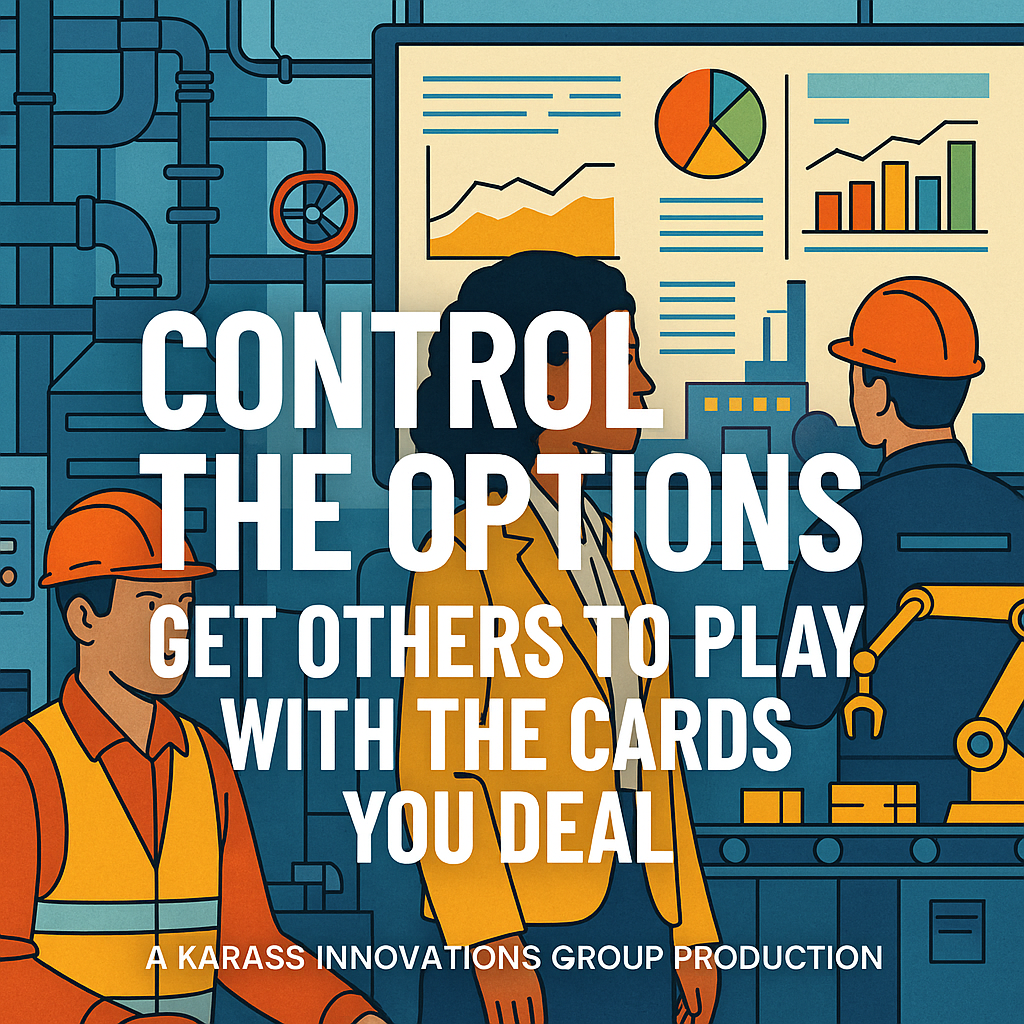Always control the options available to others. By shaping the choices they have, you can ensure that the outcomes work in your favor. People often feel empowered when they think they have options, but in reality, you are guiding them toward decisions that align with your goals.
Industry Trends & Leadership Insights (11 paragraphs, with stats)
1) Manufacturing. Factories that combine lean/MOS with digital “playbooks” target double-digit OEE gains; McKinsey highlights programs aiming for +10 OEE points and >30% unit-cost reduction when scaled with tech and disciplined execution. (McKinsey & Company)
2) Supply chain & warehousing. Gartner-cited results for advanced inventory optimization and S&OP include 10–30% inventory reductions, 10–40% on-time delivery improvement, and up to 33% efficiency gains, when scenario-based decision paths are institutionalized—not debated ad hoc. (ToolsGroup, AIMMS)
3) Distribution KPIs. The WERC DC Measures suite continues to center on order-picking accuracy, dock-to-stock, and capacity utilization; best-in-class order-picking accuracy thresholds are published at ≥99.68%—a powerful rationale to standardize picking options and confirmations. (Mmh, Yale)
4) Healthcare (safety). Standardized checklists—an “options you must touch” device—cut inpatient surgical complications from 11% to 7% and mortality from 1.5% to 0.8% in the WHO 8-hospital study, demonstrating how choice scaffolds save lives. (PubMed, New England Journal of Medicine)
5) Education (behavioral defaults). In an RCT with new mothers, auto-enrollment with opt-out in an early-learning SMS program retained 88.7% over 26 weeks, versus much lower engagement under opt-in—evidence that well-designed defaults boost equity in access. (PMC)
6) Federal government (retirement). The U.S. federal TSP raised its default deferral to 5% in 2020; current participation across FERS cohorts holds ~95–97%, illustrating how defaults aligned to incentives normalize good decisions at scale. (tsp.gov, frtib.gov)
7) Economics/markets (pricing & decoys). HBR’s Good-Better-Best strategy and the decoy effect literature show that adding an asymmetrically dominated option can steer customers to value-aligned choices—powerful, but to be used transparently. (Harvard Business Review, The Decision Lab)
8) Services/retail (digital prompts). Defaults in point-of-sale tipping can raise tip levels, though effects vary by context: NYC taxi studies show large default impacts, while nationwide ride-share experiments found a ~2.5-point average tip lift across default ranges—use prompts, but calibrate for backlash. (American Economic Association, NBER)
9) Marketing (survey/task completion). In online research, adding a decoy option increased completion of a target questionnaire from 32.7% to 55.9%, underscoring that option architecture also influences internal adoption of tools and surveys. (ScienceDirect)
10) Engineering/science (human factors). The maturing decoy/choice-architecture literature—even at neural levels—confirms decoys rarely get chosen (~1%) but reliably shift selection toward the target; this validates menu-based standards in technical reviews. (PMC)
11) Guardrails & ethics. Recent critiques note that nudges can decay over time or trigger distrust if perceived as manipulative, especially in sensitive domains like organ donation. Leaders should pair choice architecture with transparency, feedback, and opt-out legitimacy. (The Wall Street Journal, ScienceDirect)

